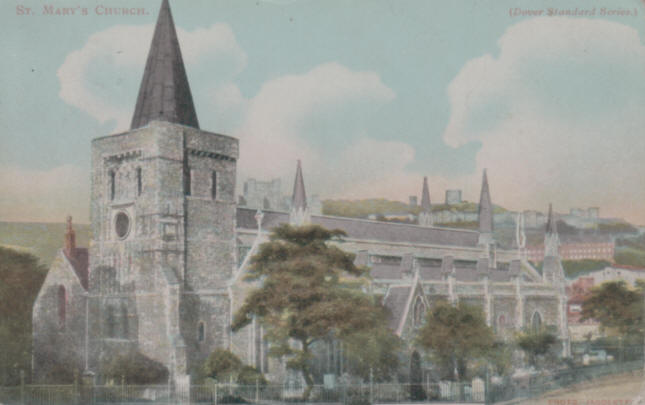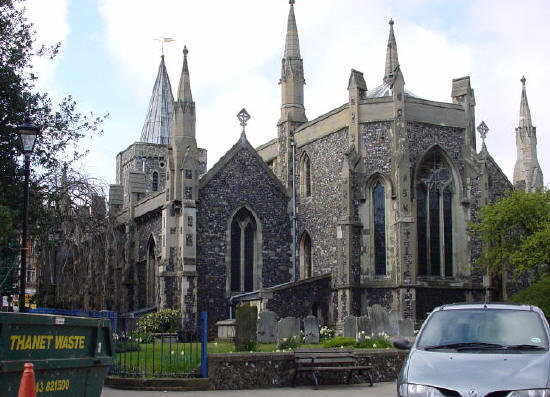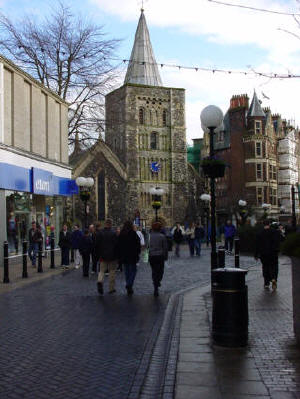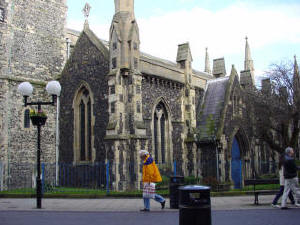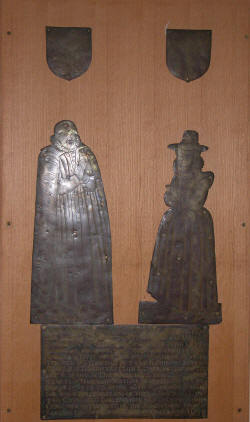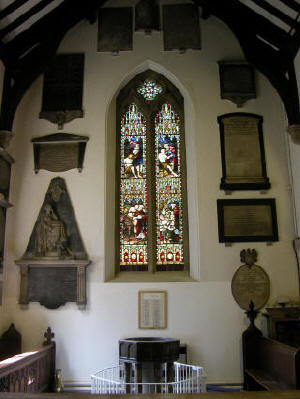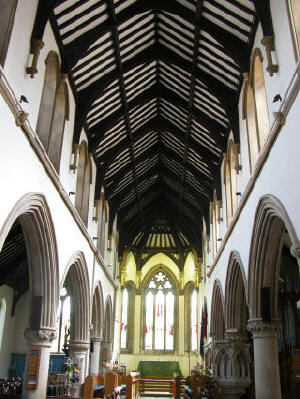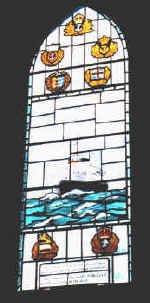St Mary's Church |
||
|
|
This postcard, posted on New
Year's Day, 1906, is taken from an original photograph by Jacolette, and
shows the view of the south side church that was obtained when the
properties opposite were demolished to widen the road. |
|
|
|
||
|
This view is of the rear of the church, from Church Street.
William Lambarde, writing in 1570, suggested that the church may have originally have been built as a hospital, founded by Hubert de Burgh, Earl of Kent, who also established the Maison Dieu. However, there is a school of thought that suggests the hospital may have been founded at least a hundred years before his time and control transferred to the Earl. The church was sealed up in 1536 by order of Henry VIII but shortly afterwards, in response to a petition from the local inhabitants, he gave it to them as their place of worship.
The building has been extensively altered and extended over the years, being totally rebuilt (with the exception of the tower) in 1843. The tower has never been rebuilt, but was built over the original porch and altered a number of times; it was restored in 1897.
|
||
|
|
This view of the front of the church was taken from Biggin Street looking towards the Market Square. The sun-dial on the south side of the tower was installed in 1656. The original clock on the west front was given by the Mayor, Mr. Peter Monins, in 1736. It was placed on a slab on the 4th stage of the tower, hiding the architectural features of that arcade. When the new clock was installed after the restoration of 1897, it was placed one stage lower with a less disfiguring effect. |
|
|
This is the best view available from Cannon Street of the south side of the church. The sun-dial can just be distinguished top left of the picture. |
|
|
|
|
This memorial brass commemorates William Jones, Gent, late of the Towne and Port of Dover, and Katherine his wife |
|
|
The font, one of the many stained glass windows, and a group of memorials to Dover's great and good. |
|
|
|
|
Looking East down the nave towards the altar. In the first half of the 20th century there were wooden galleries on both sides of the nave, with staircases behind the arches. These were removed about 50 years ago. |
|
|
This stained glass window reflects the town's close links with the sea. It depicts the cross-channel vessel "Invicta". |
|
|
